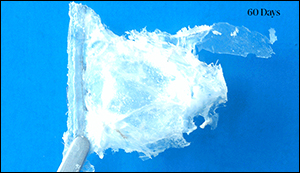Biodegradable Power Generators Could Power Medical Implants
9. 3. 2016 | IEEE Spectrum | spectrum.ieee.org
Implantable electronic devices now help treat everything from damaged hearts to traumatic brain injuries. For example, pacemakers can help keep hearts beating properly, while brain sensors can monitor patients for potentially dangerous swelling in the brain.
However, when standard electronic implants run out of power, they need to be removed lest they eventually become sites of infection. But their surgical removal can result in potentially dangerous complications. Scientists are developing transient implantable electronics that dissolve once they are no longer needed, but these mostly rely on external sources of power, limiting their applications.

Now researchers have developed a biodegradable power source that harnesses the phenomenon known triboelectricity, the most common cause of static electricity. When two different materials repeatedly touch and then separate, the surface of one material can steal electrons from the surface of the other. This is why rubbing feet on a carpet or a running a comb through hair can build up electric charge.
The researchers note that they can tune the lifetime of their nanogenerator from hours to years, depending on the needs of the implantable electronics it is designed to power. They suggest that future devices could be powered by the mechanical energy from heartbeats or respiration.
Read more at IEEE Spectrum
Image Credit: Beijing Institute of Nanoenergy and Nanosystems
-jk-




